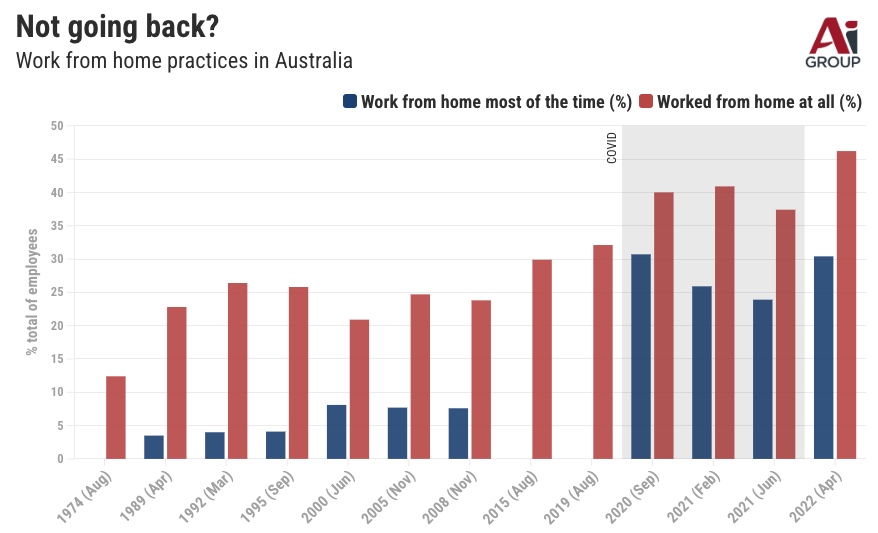For many Australians, the best thing about the years of the COVID pandemic was the shift to enabling office workers to work from home.
Although at the time, this felt isolating for some – particularly single people living alone – there were overwhelming advantages for almost everyone affected.
It gave employees more flexibility and control over their schedule, and allowed them to work from a location that suited them best.
Luckily for fans of the hybrid work model, the trend of enabling flexible work arrangements has continued beyond the pandemic.
In fact, according to surveys conducted by the Australian Bureau of Statistics in 2022, 46% of all Australian employees currently work from home to some degree.

Why the switch?
For people who who live in outer suburbs but work in the inner-city, reducing commute times is a big attraction. Instead of spending between two to three hours each day on the return trip to work, Australian workers are saving time, money and stress by avoiding long commutes to and from their offices.
Hybrid work can also make workers more productive. Many find that they work more efficiently and produce better results when working from home, without office distractions.
The ACTU Working from Home Survey suggests that improvements in productivity have already materialised,
with almost half (47.7%) of home workers reporting that they feel more productive in their home environment.
To many, working from home provides a better arrangement of their work-life balance, and gives them better control over their schedule and ability to balance work and personal responsibilities.
This, in turn, promotes better health and well-being. Employees are happier and more productive if they can take breaks during the day, spend time with family or friends, exercise or attend appointments.
Challenges of working from home
However, the model doesn’t suit everyone. Some people miss the social interaction they get in traditional office environments, and can feel isolated or lonely when working from home.
People with busy households can find that there are too many distractions. Children, other family members, pets and household jobs can divert attention away from work and decrease productivity.
Those living in small units without a proper workspace may also find it hard to create an efficient, productive workspace at home.
Others may have difficulty separating their work and personal lives, which can result in stress and burnout.
And we’re sure that everyone has experienced technical issues while working from home. Internet issues, software problems and lack of easy access to work equipment like printers and scanners can be difficult to manage.
Now, with the widespread availability of COVID-19 vaccines and antiviral medication, many companies are urging their employees to return to the office.
Some don’t trust their staff to work from home and argue that coming into the office allows for increased collaboration and communication between employees.
Other arguments against working from home include data security, the cost of supporting remote work effectively, and the challenges of monitoring employee productivity.
Others argue that working together is central to a healthy corporate culture.
Choice is the solution
It’s important to note that working from home doesn’t suit everyone. Many companies have opted for a hybrid model where employees are allowed to work at home some days of the week and spend the rest of the time in the office.
Employers who provide no flexibility or ability for their staff to work from home at least some days of the week may find some quit their jobs and choose roles which allow them to work from home at least some of the time.
In the current low unemployment environment where there is competition for high-quality, talented employees who want to work from home part-time, employers must consider offering those conditions or they could face problems attracting talented workers.





